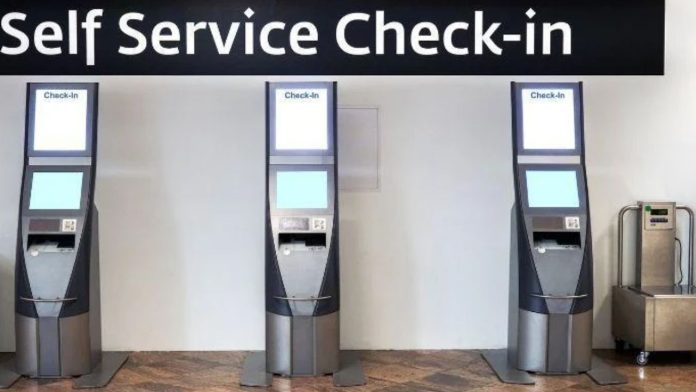Airports have long been watched as places where people spend a lot of time waiting in lines, haste at the Check-in Kiosk counters or leaving gates, and are generally stressed at airports. But, the use of self-service check-in kiosks has brought an extreme modification to the airport atmosphere. These kiosks replace the most traditional check counter services making the passenger process independent and cutting down on the flow of crowds and therefore providing a way to reduce the general traffic jam in airports.
Reducing the Time Taken to Check-in
An advantage of check-in kiosks is the time taken by passengers to check-in The conventional check-in counters are usually slow, especially during the busy seasons. With the help of kiosks, passengers can input their flight details, choose available seats, and obtain boarding passes with the help of self-service instead of the service provider.
Minimizing the Dependence on Human Employees
Since kiosks help to perform most of the check-in tasks, there is no need for many check-in agents to be stationed at counters. These cuts in staffing requirements help relieve airport employees to allow them to tend to other crucial tasks including, baggage, handling of disabled passengers, or complicated ticketing issues. The overall impact is a better distribution of our workforce and shorter queues because such ordinary tasks can be easily performed by most passengers.
Minimizing Human Errors
Ticketing and seat allocation mistakes create congestion at these points and more significantly, such mistakes will slow down the check-in process and affect the passengers’ time. This problem is solved by check-in kiosks because passengers enter their data themselves, and there is no need for a complicated system. As there are fewer human interferences, the chance of errors also reduces. It reduces the likelihood of check-in congestion by making them even more efficient and minimizing mistakes that may cause boarding delays.
Enhancing Passenger Autonomy
It is true that by using the check-in kiosks the passengers are given full control of their trip. Guests can modify their bookings, select better seats, and control their baggage allowance without the help of airport personnel. This self-service model also works to the advantage of removing much of the burden on airport staff and increasing the efficiency with which passengers can cater to their requirements at their convenience as this cuts the time they take to process people or to form lines.
Efficient use of airport space
Airports are busy places, especially during the busy season and fixed check-in counters occupy a lot of space on the floor. Self-service kiosks can replace many counters, which can save space for other purposes, for example, more security checkpoints, more seats, or shops. This is because high utilization of space is achieved in an airport so that it can accommodate more people than it does physically, thereby increasing the efficiency of the flow of passengers in the terminal.
Conclusion
Thus, these kiosks help reduce queues and enhance the passenger experience by facilitating a faster check-in, no or little involvement of staff, fewer human errors providing passengers with the ability to check in themselves, and maximizing the use of space. With airports’ ongoing process of modernization, the application of check-in kiosks is expected to remain a key component of their business models.














